Micro Star MS6837D Bluetooth User Manual 6837D EMI
Micro Star International Co Ltd Bluetooth 6837D EMI
users manual

(MS-6837D)
Bluetooth 2.0+EDR USB
Module
User’s Guide
FEDERAL COMMUNICATIONS COMMISSION INTERFERENCE STATEMENT
This equipment has been tested and found to comply with the limits for a Class B digital
device, pursuant to Part 15 of the FCC Rules. These limits are designed to provide
reasonable protection against harmful interference in a residential installation. This
equipment generates, uses and can radiate radio frequency energy and, if not installed
and used in accordance with the instructions, may cause harmful interference to radio
communications. However, there is no guarantee that interference will not occur in a
particular installation. If this equipment does cause harmful interference to radio or
television reception, which can be determined by turning the equipment off and on, the
user is encouraged to try to correct the interference by one or more of the following
measures:
– Reorient or relocate the receiving antenna.
– Increase the separation between the equipment and receiver.
– Connect the equipment into an outlet on a circuit different from that to which the
receiver is connected.
– Consult the dealer or an experienced radio/TV technician for help.
CAUTION:
Any changes or modifications not expressly approved by the party responsible for
compliance could void the user's authority to operate the equipment.
This device complies with Part 15 of the FCC Rules. Operation is subject to the following
two conditions:
(1) This device may not cause harmful interference and
(2) This device must accept any interference received, including interference that may
cause undesired operation.
FCC RF Radiation Exposure Statement
This equipment complies with FCC RF radiation exposure limits set forth for an
uncontrolled environment.
This equipment must not be co-located or operating in conjunction with any other antenna
or transmitter.
Important Note
In the event that these conditions can not be example certain laptop configurations or
colocation
with another transmitter), then the FCC authorization is no longer considered valid the FCC
ID can not be used on the final product. In these circumstances, OEM integrator will be
responsible for re-evaluating the end product (including thetransmitter) and obtaining a
separate FCC authorization.

End
Product
Labelin
g
This transmitter module is authorized only for use in device where antenna may b
e
installed such that 20 cm may be maintained between antenna and users (for
example
access points, routers, wireless ADSL and similar equipment). The final end produc
t
must be labeled in a area with the following: “Contains TX FCC ID: I4L-MS6837D”.
Manual
Information
for
End
User
s
The end user must not have manual instructions to remove or install device. The
user manual for end users must include the following information in a prominent
location:
“IMPORTANT NOTE: To comply with FCC RF exposure compliance requirements
,
the antenna used for this transmitter must be installed to provide a separation distance
of
at least 20 cm from all persons and must not be co-located operating in conjunction
with
any other antenna or transmitter.” as a result of e-mail transmission.”
Important
Safety
Precaution
s
Always
read and follow these basic safety precautions carefully when handling any
piece of electronic component.
1. Keep this User’s Guide for future reference.
2. Keep this equipment away from humidity.
3. Lay this equipment on a reliable flat surface before setting it up.
4. The openings on the enclosure are for air convection hence protects the
equipment from overheating.
5. All cautions and warnings on the equipment should be noted.
6. Never pour any liquid into the opening that could damage or cause electrical
shock.
7. If any of the following situations arises, get the equipment checked by a
service personnel:
Liquid has penetrated into the equipment
The equipment has been exposed to moisture
The equipment has not work well or you can not get it work
according to User’s Manual
The equipment has dropped and damaged
If the equipment has obvious sign of breakage
8. DO NOT LEAVE THIS EQUIPMENT IN AN ENVIRONMENT
UNCONDITIONED, STORAGE TEMPERATURE ABOVE 70O C OR
BELOW -35OC, IT MAY DAMAGE THE EQUIPMENT.
ii
i

Introduction
>>>
1.1
BT2RM
(MS
-
6837D
)
Bluetooth Module
MSI Bluetooth 2.0+EDR USB module, BT2RM, is a USB
1.1 Full Speed Module compatible with USB 2.0, being
used to integrate with systems such as notebook, Barebone
computer, PDA, portable PC, Smart Phone. With MSI
BT2RM
embedded inside, a system could provide users with
the ability and flexibility to link with peripherals wirelessly
through EDR (Enhanced Data Rate) technology in
Bluetooth v2.0+EDR speeding up to 3Mbps, advanced AFH
(Adaptive Frequency Hopping) techniques in Bluetooth v1.2
to minimize interference and enhance performance when
linking with Bluetooth v1.1 devices and eSCO (extended
SCO) techniques in Bluetooth v1.2 optional supported for
enhancing the audio performance.
1
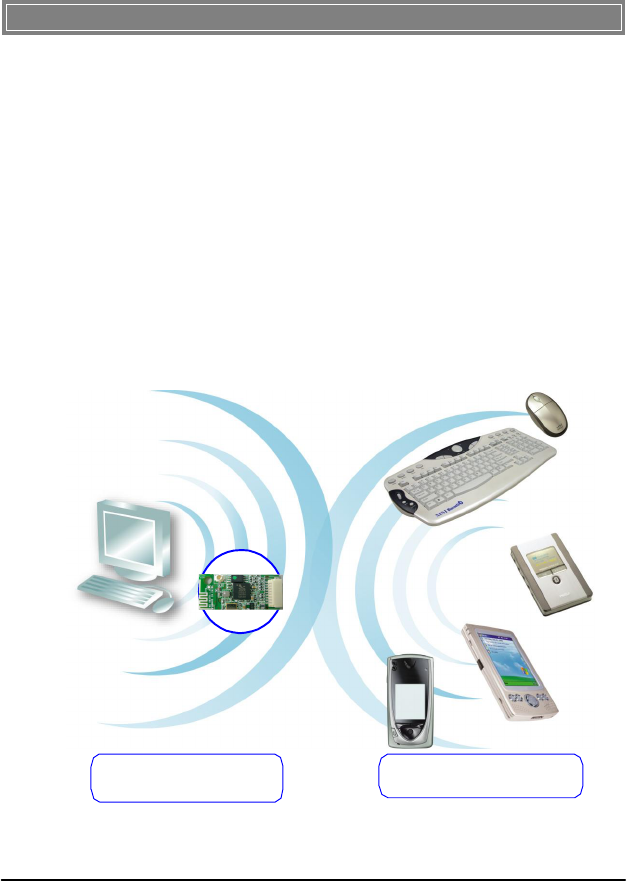
>>>
1.2
How
BT2RM
Work
s
2
BT2RM
Bluetooth
Module
Bluetooth
-
enabled
Device
s
1.2.
1
In
Bluetooth
Connectio
n
The term “Bluetooth” refers to a worldwide standard for th
e
wireless exchange of data between two devices. In order to ex
-
change data, two Bluetooth devices must establish a
connection.
Before a connection is established, one device must request
a
connection with another. The second device accepts (or
rejects)
the connection. The originator of the request is known
as
the client. The device that accepts (or rejects) the request
is
known as the server. Many Bluetooth devices can act as
both
client and
server. Every Bluetooth device that provides a
service must be prepared to respond to a connection
request.
Bluetooth soft- ware is always running in the background on
the
server, ready to respond to connection requests.
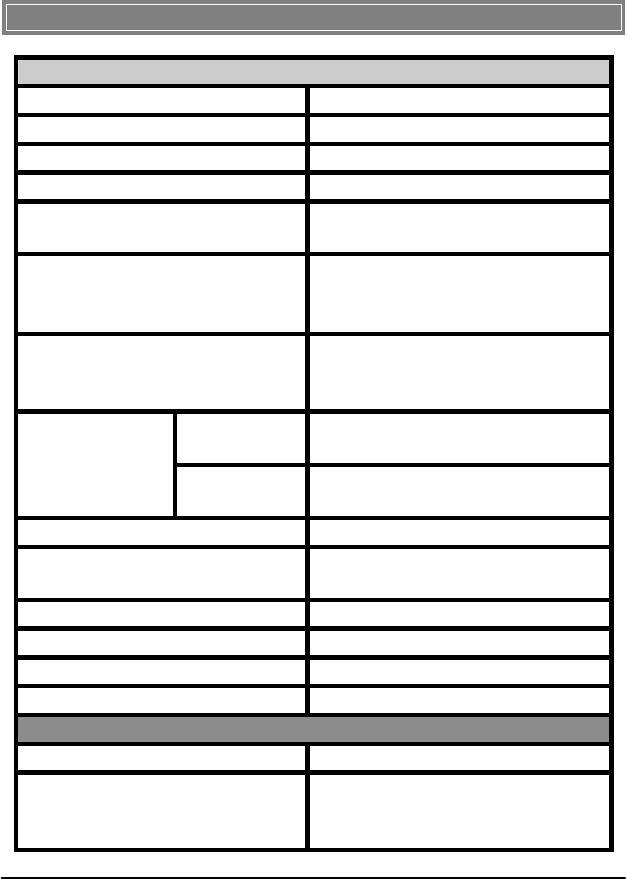
Bluetooth Specifications
Radio Standard Bluetooth Class II v2.0+EDR
Frequency Band 2.400-2.4835 GHz
Data Rate Up to 2169kbps
Channel 79 sub-channels
Transmission FHSS (Frequency Hopping
Spread Spectrum)
Modulation GFSK@1Mbps, π/4
DQPSK@2Mbps,
8DPSK@3Mbps
Antenna Type Printed Circuit Antenna or
One antenna connector
support
Operating
Temperature
-35° to 70°C Temperature
Storage
Temperature
-20° to 70°C
Humidity 10%-90% (non-condensing)
Power Consumption 61.37mA in continue Tx
12mA in Standby mode
Output Power 0~4dBm
Max Input Level 0dBm
Receiver Sensitivity -82 dBm @ BER<0.1%
Range Up to 10m operating range
Baseband
Physical Links Support ACL and SCO link
Network Capabilities
Support piconet point-to-
point and point-to-multipoint
connections
3
>>>
1.3
Specification
s
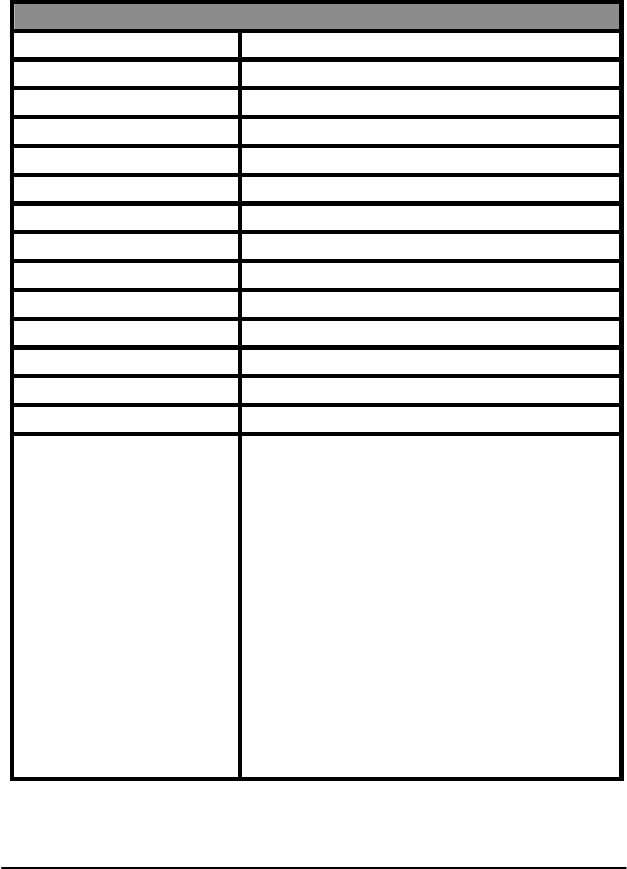
Link Manager
3-slot Packets Yes
5-slot Packets Yes
Slot Offset Yes
Timing Accuracy Yes
Switch Yes
Hold Mode Yes
Sniff Mode Yes
Test Mode Yes
Park Mode Yes
RSSI Yes
Power Control Yes
Authentication Yes
Encryption Yes
System Support Windows® 2000/ME/98SE/XP
Profile Support
Generic Access Profile/Service
Discovery Profile/Serial Port
Profile/Dial-Up Networking
Profile/Fax Profile/LAN Access
Profile/Generic Object Exchange
Profile/File Transfer Profile/Object
Push Profile/Synchronization
Profile/Personal Area Network
Profile/Hard Cable Replacement
Profile/Basic Image Profile/Generic
Audio Video Distribution
Profile/Advanced Audio Distribution
Profile/Audio Video Remote Control
Profile
4
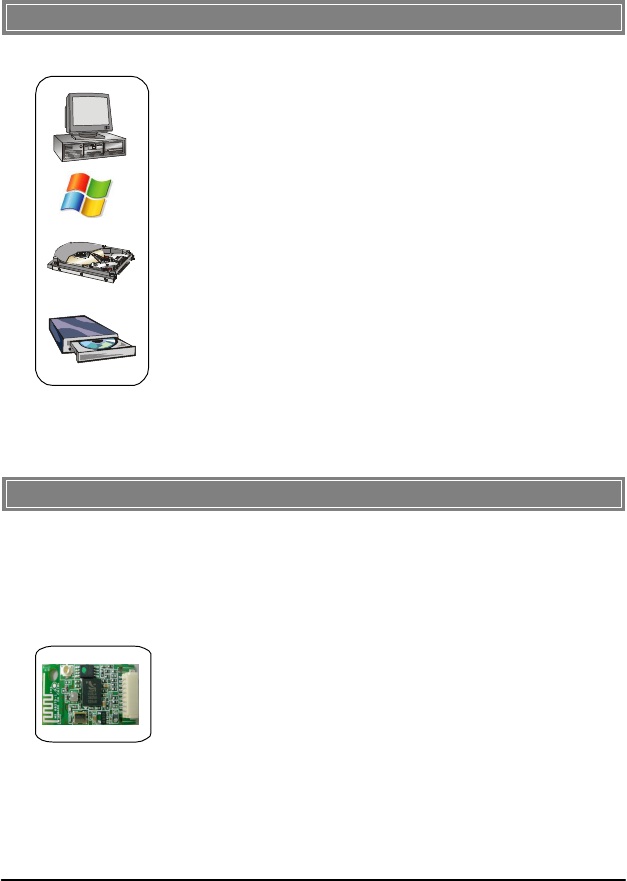
>>>
1.4
System
Requirement
s
Before installing BT2RM, your PC should meet the following
items:
-
One desktop/notebook PC with an available Min
iPCI slot.
-
Windows
®
98SE/ME/2000/XP operating system.
-
Minimum
5MB
free
disk
space
for
installing
the
driver
and
utilities.
-
One CD
-
ROM drive, double speed or higher.
>>>
1.5
Package
Content
s
Unpack the package and check all the items carefully. If any
item
contained is damaged or missing, please contact your local
dealer
as soon as possible. Also, keep the box and packing materials
in
case you need to ship the unit in the future. The package
should
contain
the
f
ollowing
items:
-
One
Bluetooth module
.
5
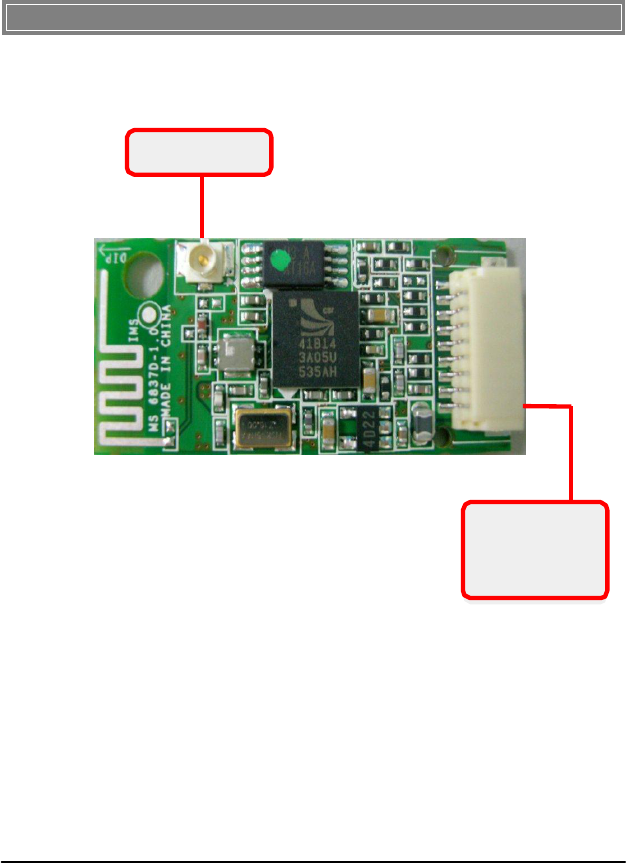
>>>
1.6
Product
Vie
w
Bluetooth
antenn
a
Connecto
r
USB
Connecto
r
Connect to
your notebook
using the provided
USB cable.
6
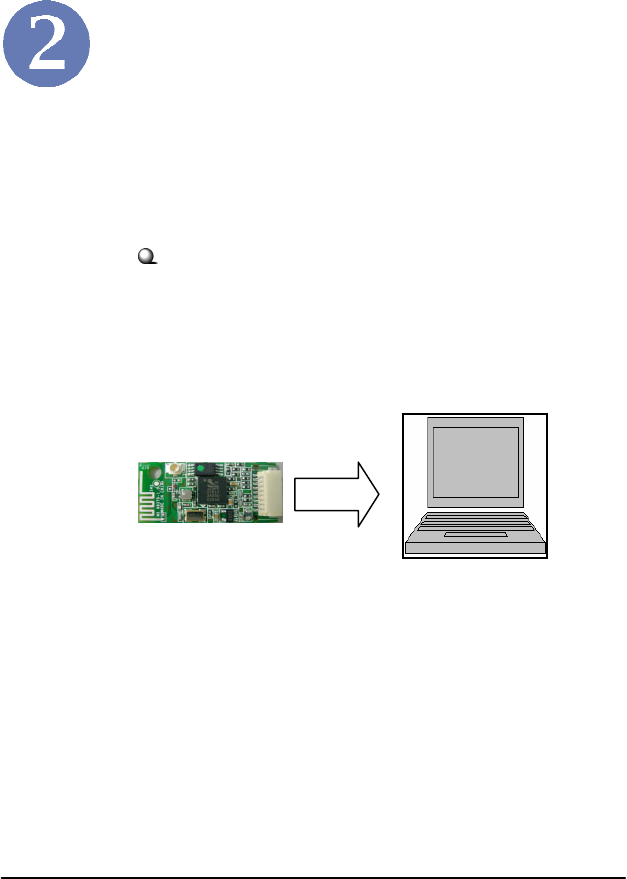
The following diagrams provide you a basic installation for
your
BT2RM . The instruction below is suitable for most com
-
puters with USB slot. For more information about the
USB
module, please refer to your computer’s manual.
Hardware
Installation
Installing BT2RM:
1. Connect one end of the USB cable to the eight
-pin USB connector on BT2RM , and
the other end to the USB connector located on
your notebook.
7
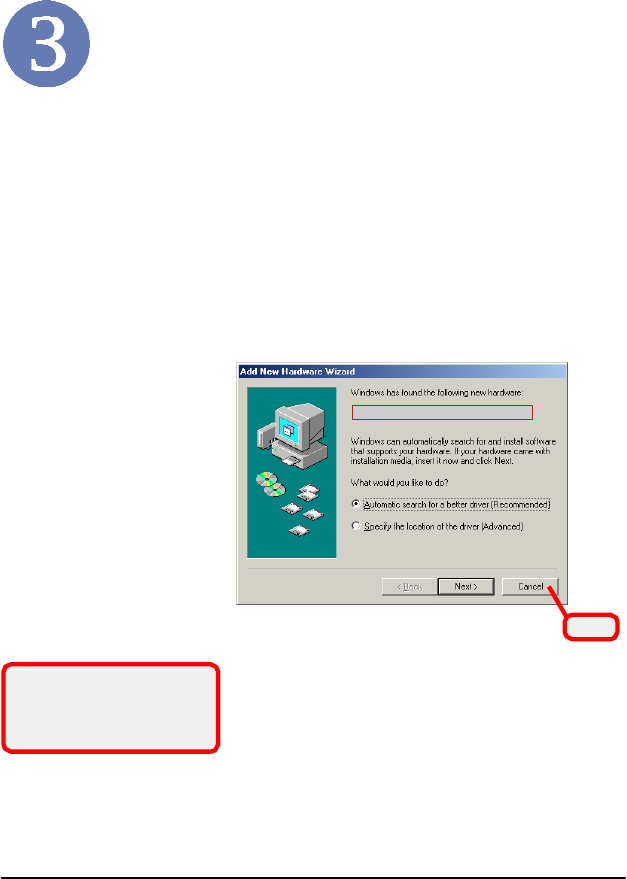
Software
Installatio
n
This chapter describes the procedures of installing the driver
and utility. Follow the instruction step by step to finish
the installation. If you use Windows® 98SE/ME, please
prepare the Windows® Setup CD at hand before installing the
driver; because the system will ask you to insert the Setup CD
to copy files during the installation.
Please
NOT
E
that the
BT2RM
should be installed int
o
your computer before installing the driver and utility
.
Then, the operating system will detect a new device and
start
to con- figure the new device. Click Cancel here to
start
installation from the InstallShield Wizard.
The
adapter
model
you
installe
d
Clic
k
Tip: The
BT2RM
adapte
r
should be installed into your P
C
before installing the driver an
d
utility
.
8
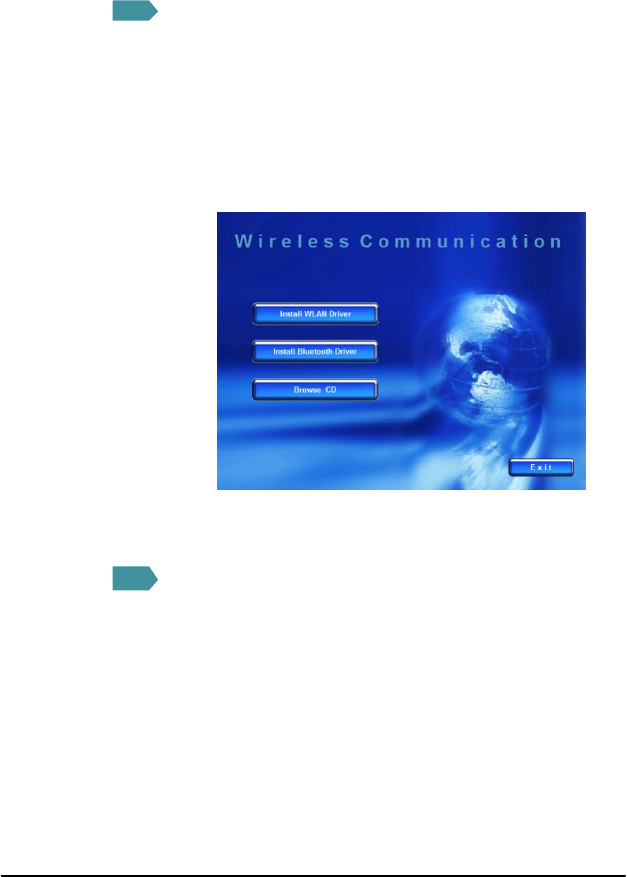
STEP
1
Insert the software CD into your CD-ROM drive, and the Setup
program should launch automatically.
If the Autorun program doesn’t launch automatically, click Star
t
at the taskbar and select Run.... Type E:\setup.exe (where
E
is your CD-drive) in the Open box and click OK to
launch
the Setup program manually.
The
main
screen
of
Set
up
program
will
appear
as
below
.
STEP
2
9
1
.
Clic
k
th
e
Install
Bluetooth
Drive
r
button
.
2.The welcome screen of InstallShield Wizard appears.
Click Next.
3.Read and accept the License Agreement; then, click Next.
4.Click Next to install the driver in the default destination
folder.
5.Click Install and the program will copy the necessary
files to the system. The progress indicator shows the
installing status.
6.Click Finish when the bluetooth driver installation is
completed.
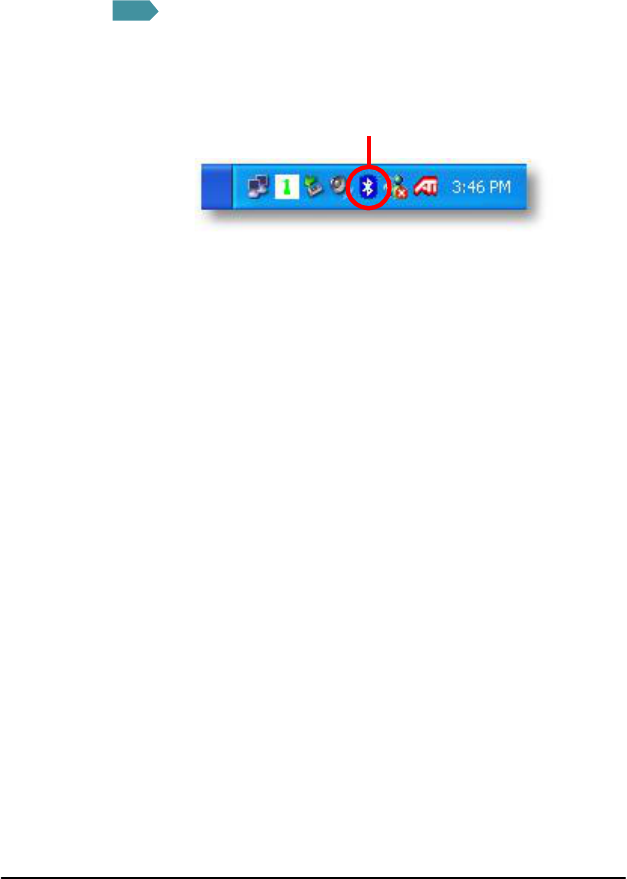
STEP
3
Bluetooth
ico
n
10
Click
th
e
Exi
t
button
.
The Wireless LAN icon and Bluetooth icon will appear in th
e
status bar.
FEDERAL COMMUNICATIONS COMMISSION INTERFERENCE STATEMENT
This equipment has been tested and found to comply with the limits for a Class B digital
device, pursuant to Part 15 of the FCC Rules. These limits are designed to provide
reasonable protection against harmful interference in a residential installation. This
equipment generates, uses and can radiate radio frequency energy and, if not installed
and used in accordance with the instructions, may cause harmful interference to radio
communications. However, there is no guarantee that interference will not occur in a
particular installation. If this equipment does cause harmful interference to radio or
television reception, which can be determined by turning the equipment off and on, the
user is encouraged to try to correct the interference by one or more of the following
measures:
– Reorient or relocate the receiving antenna.
– Increase the separation between the equipment and receiver.
– Connect the equipment into an outlet on a circuit different from that to which the
receiver is connected.
– Consult the dealer or an experienced radio/TV technician for help.
CAUTION:
Any changes or modifications not expressly approved by the party responsible for
compliance could void the user's authority to operate the equipment.
This device complies with Part 15 of the FCC Rules. Operation is subject to the following
two conditions:
(1) This device may not cause harmful interference and
(2) This device must accept any interference received, including interference that may
cause undesired operation.
FCC RF Radiation Exposure Statement
This equipment complies with FCC RF radiation exposure limits set forth for an
uncontrolled environment.
This equipment must not be co-located or operating in conjunction with any other antenna
or transmitter.